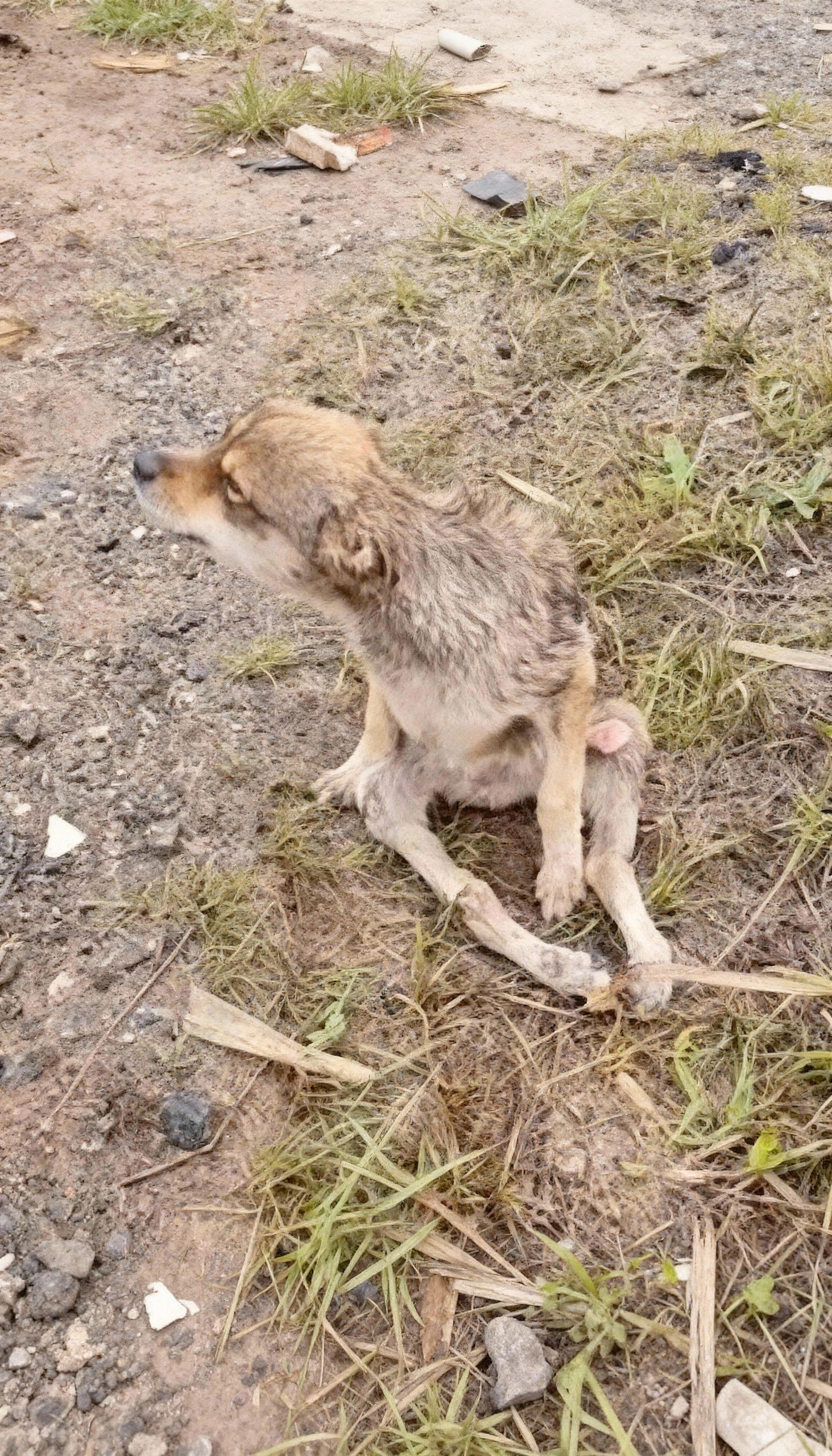The image before us is a stark reminder of a pervasive and heartbreaking issue: animal neglect. It captures a vulnerable creature, seemingly a dog, in a state of profound distress, its emaciated body and dejected posture speaking volumes about the hardships it has endured. The setting—a patch of barren, unkempt ground—only amplifies the sense of abandonment and despair. This isn’t just a photograph; it’s a window into the suffering of countless animals worldwide, a silent plea for compassion and intervention. The goal of this article is to delve into the multifaceted problem of animal neglect, exploring its causes, consequences, and, most importantly, the tangible steps we can take as individuals and communities to alleviate this suffering and ensure a better future for our animal companions.

Understanding the Root Causes of Neglect
Animal neglect isn’t a simple issue; it stems from a complex web of socioeconomic factors, lack of awareness, and sometimes, outright cruelty. Poverty often plays a significant role, as individuals struggling to meet their own basic needs may find it impossible to provide adequate care for their pets. This can lead to insufficient food, lack of veterinary attention, and inadequate shelter. Education also plays a crucial part; many instances of neglect arise not from malicious intent but from ignorance about an animal’s specific needs, dietary requirements, or the importance of preventative healthcare. Furthermore, irresponsible breeding practices contribute to overpopulation, leading to an abundance of animals that end up abandoned or neglected. Economic downturns can exacerbate these problems, with more people being forced to give up their pets or unable to afford their care.

The Dire Consequences for Animals
The impact of neglect on an animal is profound and often long-lasting. Physically, it manifests as malnutrition, dehydration, untreated injuries, and chronic illnesses. Animals suffering from neglect are susceptible to parasites, infections, and a host of preventable diseases. The psychological toll is equally devastating. These animals often exhibit fear, anxiety, aggression, or extreme timidity. They may struggle to trust humans, making their eventual rehabilitation a challenging but vital process. Socialization is often lacking, leading to difficulties interacting with other animals and people. The image of the dog, with its downturned gaze and visible ribs, is a poignant testament to the physical and emotional scars left by neglect. This suffering is not just a temporary state but can lead to long-term health issues and behavioral problems that require extensive care and patience to overcome.

Breaking the Cycle: The Role of Awareness and Education
One of the most powerful tools in combating animal neglect is education. Raising public awareness about responsible pet ownership—including proper nutrition, regular veterinary care, the importance of spaying and neutering, and the commitment involved in owning a pet—is paramount. Educational campaigns can target communities where neglect is prevalent, offering resources and guidance to pet owners. Schools can integrate lessons on animal welfare into their curriculum, fostering empathy and responsible attitudes from a young age. Workshops on animal care, accessible to all, can demystify pet ownership and equip individuals with the knowledge to provide a loving and healthy environment for their animals. By increasing understanding, we can prevent many cases of neglect before they even begin. This proactive approach is far more effective than reactive interventions.

Support Systems for Pet Owners in Need
It’s crucial to acknowledge that not all neglect is intentional. Many loving pet owners find themselves in difficult circumstances, unable to provide the care their animals need due to financial constraints or personal crises. Establishing robust support systems is vital to prevent these situations from escalating into neglect. This includes accessible and affordable veterinary clinics, pet food banks, and temporary fostering programs. Community outreach initiatives can identify at-risk pet owners and offer assistance before an animal’s welfare is severely compromised. Providing resources such as subsidized spay/neuter services can also alleviate the burden of unexpected litters and reduce the overall stray population. By offering a helping hand, we can keep families together and prevent animals from ending up in shelters or on the streets.







